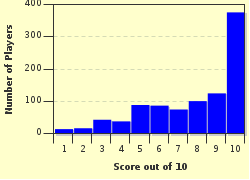Quiz Answer Key and Fun Facts
1. Which historical figure first defined temperance as "moderation in all things healthful; total abstinence from all things harmful"?
2. Which Temperance group, founded in Illinois in 1873, had Annie Wittenmyer and the renowned feminist, Frances Willard, as its first two Presidents?
3. Temperance laws introduced to try and reduce alcohol consumption led to the infamous "Six O'Clock Swill". In which of these countries was this?
4. Which caricaturist and satirical commentator, famous for his illustrations in the 1818 pamphlet "The Political House That Jack Built", was also instrumental in the success of the early British Temperance movement?
5. Perhaps one of the most famous Temperance laws ever enacted was Prohibition in the United States, in force from 1920 to 1933. How was the National Prohibition Act, which made prohibition law, commonly known?
6. Who was the Irish clergyman who founded the Total Abstinence Society, and popularised "signing the pledge" as a way for people to commit to a life without alcohol?
7. When George Sims wrote "The drink dulls every sense of shame, takes the sharp edge from sorrow, and leaves the drinker for awhile in a fools' paradise", who was he writing about in particular?
8. The Band of Hope temperance association was founded in the English city of Leeds in 1847. Who were its target membership?
9. Under a piece of nineteenth century legislation called the Sunday Closing Act, all the public houses in which country of the United Kingdom were forced to close on Sundays?
10. One famous abstainer from alcohol was the President of the United States, Rutherford B. Hayes.
His wife was well known for refusing to serve alcohol at White House functions. What nickname did this earn her?
Source: Author
Rowena8482
This quiz was reviewed by FunTrivia editor
bloomsby before going online.
Any errors found in FunTrivia content are routinely corrected through our feedback system.

